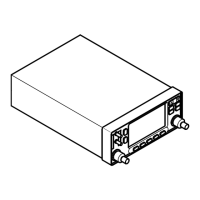CIRRUS AIRPLANE MAINTENANCE MANUAL MODELS SR22 AND SR22T
24-30
Page 1
All
EFFECTIVITY:
DC GENERATION
1. DESCRIPTION
This section covers the systems to generate, regulate, control, and indicate DC electrical power. The DC
generation portion of the system includes the batteries, alternators (with internal rectifiers), and regulator.
Two batteries (battery 1 and battery 2) and two alternators (alternator 1 and alternator 2) are used in the
power generation system on this airplane. Both batteries are used for power storage. The two alternators
are very similar in design to each other.
The alternators and the batteries are designed to function in parallel or independently. Both alternators are
self-exciting which means the alternators become energized as soon as either battery switch is moved to
the “on” position. If an alternator becomes disconnected, the remaining alternator will still function properly,
as long as the opposing alternator received initial excitation. If the alternators were initially excited from the
batteries, they will continue to generate electrical power if either battery should fail. Because the alterna-
tors are self-exciting (not self-starting), the battery switches should never be turned off during flight.
A. DC Generation - Serials w/o Perspective Avionics
During normal operation, the alternators feed their respective distribution bus independently (ALT 1
feeds the Main Distribution Bus and ALT 2 feeds the Essential Distribution Bus). The distribution buses
are interconnected by two 50-amp fuses and diodes. The diodes prevent ALT 2 from feeding the Main
Distribution Bus. Additionally, since ALT 2 / Essential Bus voltage is slightly higher than ALT 1 / Main
Distribution Bus voltage, ALT 1 will not feed the Essential Distribution Bus unless ALT 2 fails.
The alternators are three-phase AC generator type; each alternator has an internal rectifier, which lim-
its current output to 28 VDC. Each alternator uses two diodes for each phase to rectify the output. In
addition, these diodes will block reverse current. If a single output diode were to fail, the winding junc-
tion will be held to the output potential, reducing the quantity of current the alternator can produce.
The alternators are regulated by the MCU and power the MCU via 6 AWG tin plated copper wires.
Alternator 1 is protected by an 80-amp fuse within the MCU while alternator 2 is protected by a 40-amp
fuse within the MCU. ALT 1 is connected to the Main Distribution Bus and ALT 2 is connected to the
Essential Distribution Bus. Each alternator system has its own 5-amp alternator circuit breaker located
in the circuit breaker panel. Each alternator is individually protected against overvoltage generation by
the field control module, located within the MCU. ALT 1 is regulated to 28 volts and ALT 2 is regulated
to 28.75 volts.
Voltage output of each alternator is a function of engine RPM, alternator design, and load on the alter-
nator. During low RPM operation, the alternator will require higher engine RPM to provide the same
voltage to increased electrical loads. With nominal loads on the electrical system, alternator 2 will drop
off at approximately 1700 - 2200 RPM and alternator 1 will drop off at approximately 600 - 900 RPM.
Alternator 2 drops off before alternator 1 because alternator 2 spins half as fast as alternator 1.
The drop off RPM for each alternator will change whenever the electrical system loads are altered from
nominal. Any time an alternator drops off line, it will be indicated by illumination of the corresponding
ALT 1 or ALT 2 annunciators. If an alternator drops off line due to low engine RPM, the alternator(s)
can be restarted by simply increasing engine RPM. When alternator 2 drops off line, the ALT 2 annun-
ciator will illuminate and alternator 1 will provide electrical power to the entire electrical system, includ-
ing charging both batteries. When alternator 1 drops off line, the ALT 1 annunciator will illuminate and
alternator 2 will provide electrical power to only the Essential Bus and BAT 1 will provide power to the
Main Bus. Alternator 2 will then allow continued operation of only the flight critical instruments and
charging of battery 2.
15 Jun 2010





